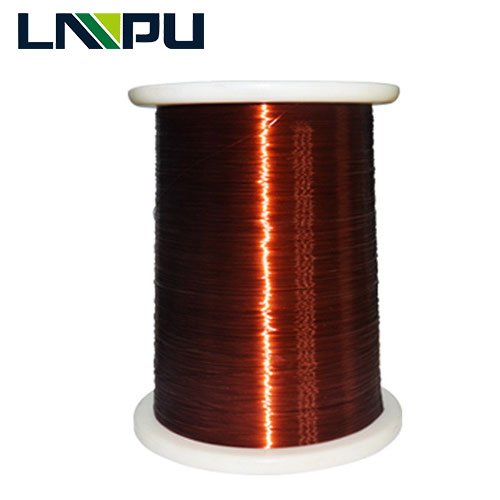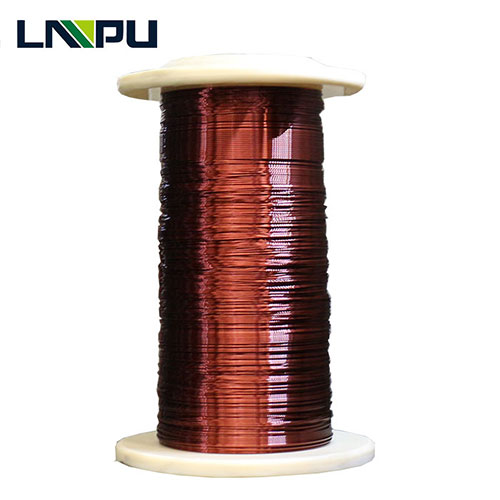Class 180 magnet wire is designed for applications requiring both high thermal resistance and low soldering temperatures, which consists of a solder- strippable modified polyurethane film insulation over-coated with nylon.
Class 180 is recommended but not limited to the following applications:
• Bobbin wound and paper section coils
• Encapsulated and molded coils
• Small motor, armatures and field coils
• Automotive coils and solenoids
• Toroidal coils
• Specialty power transformers
• Linear motors
• RF Coils
Engineering Highlights
1. THERMAL CLASSIFICATION
Class180 magnet wire is Class 180 when measured in accordance with the ASTM-D2307 test procedure. Heat shock resistance exceeds 200˚C.
2. THERMOPLASTIC FLOW
Thermoplastic flow or cut-through temperature of Class180 magnet wire is in the 225°C plus range; well above maximum process conditions found in molded coil work, trickle impregnation processes and standard pre-heat varnish cycles specified for normal Class 130, 155 and 180 systems.
3. SOLDERABILITY
Class180 magnet wire solder strips readily and much more easily than MW 78 type products. It solders consistently at temperatures as low as 390˚C.
4. WINDABILITY Flexibility
and adhesion properties of the Class180 magnet wire film are more than adequate for all but the most severe fine wire winding applications.
5. ELECTRICAL
Class180 magnet wire insulation exhibits high dielectric strength retention under high humidity conditions.
6. CHEMICAL
The solvent resistant properties of Class180 are suitable for most classes 105, 130, 155 and 180 varnishes, encapsulants, and treating resins. It has improved salt water resistance compared to other solderable wires.
| Thermal Properties | Typical Performance | Required Performance |
| Solderability | 1 Second @ 390°C | ≤ 5 Seconds @ 390°C |
| Heat Shock Resistance | No Cracks @ 200°C | 20%, 3 Xd, No Cracks |
| Thermal Stability | 189°C | 180°C Minimum |
| Thermoplastic Flow | 259°C | 225°C |
| Physical Properties | ||
| Adhesion And Flexibility | No Cracks | 20%, 1Xd, No Cracks |
| Conductor Elongation | 26% | 20% Minimum |
| Electrical Properties | ||
| Continuity | ≤ 1 Fault/100 Feet | ≤ 5 Faults/100 Feet |
| Dielectric Breakdown Voltage | ||
| Room Temperature | 6400 Volts, Avg. | 2340 Volts, Minimum |
| Rated Temperature | 4900 Volts, Avg. | 1755 Volts, Minimum |



